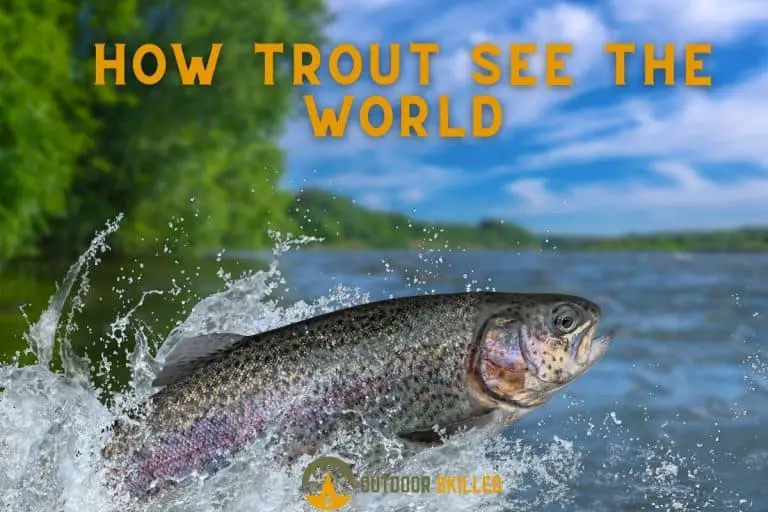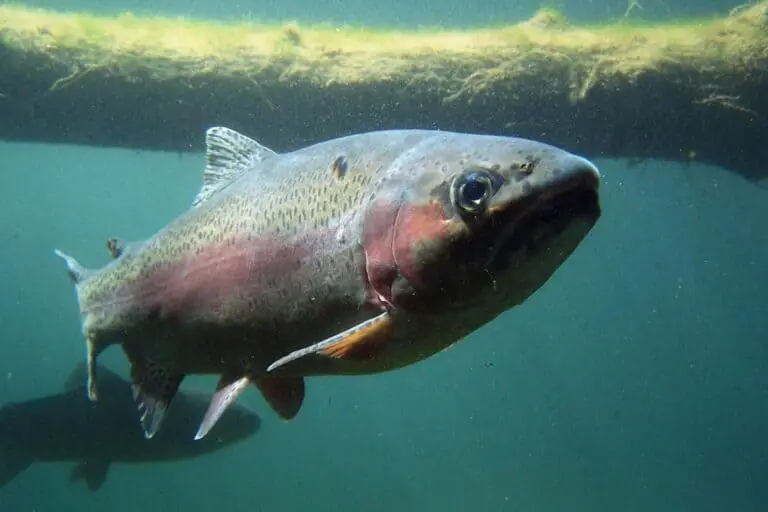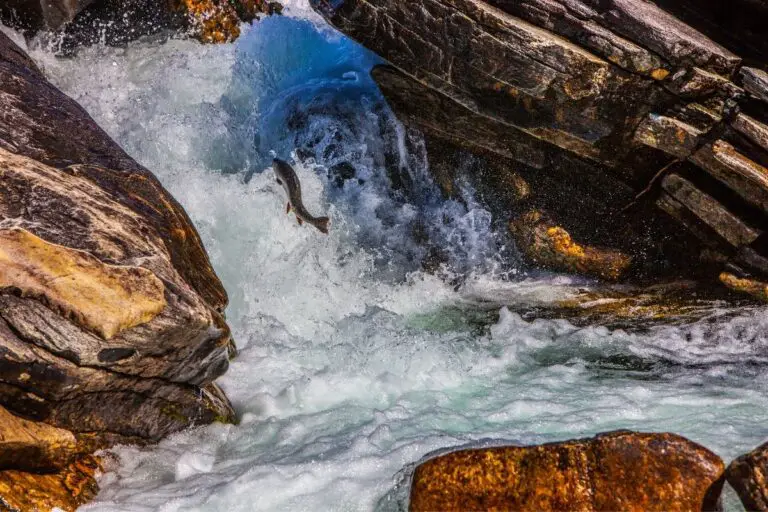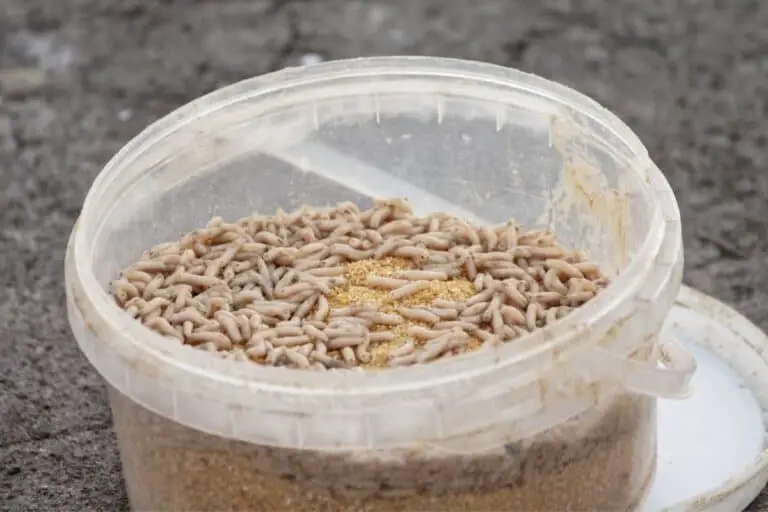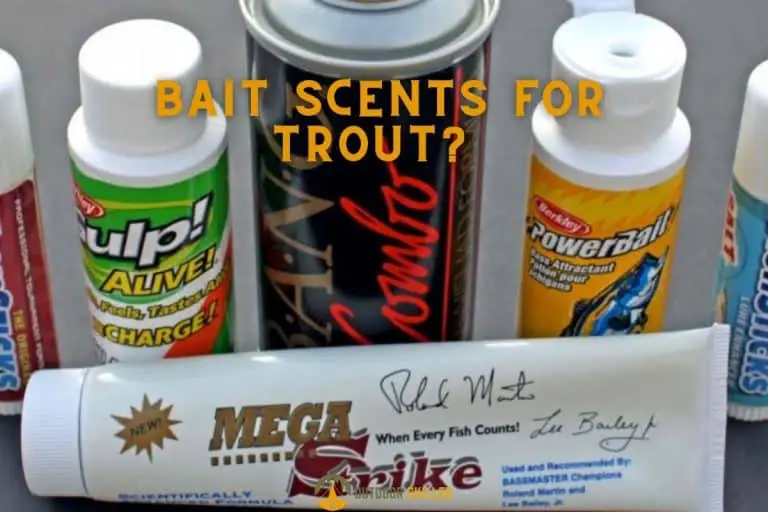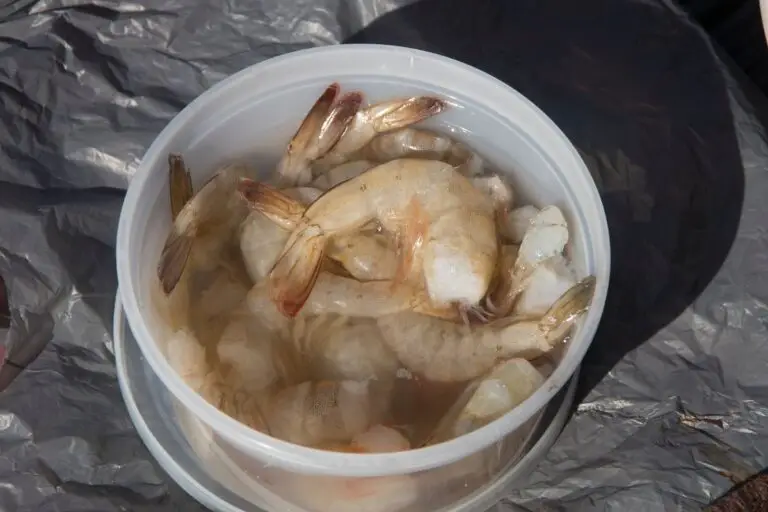How to Use Minnows for Trout Fishing Effectively – A Step-by-Step Guide
Trout fish diet consists mostly of small baitfish and aquatic invertebrates such as insect larva. That’s why live natural baits are the most ideal for targeting trout.
Minnows are one of the most effective live baits that can be used to target several gamefish species, including trout. They’re available in abundance and can be fished any time of year, in any water condition.
So, do minnows work for trout? Minnows do work for trout. That is because trout mostly prefer natural baits including small baitfish. Minnows are relatively easy to catch and store. They’re also easy to rig for trout fishing in multiple ways.
Keep reading to learn more about minnows, how to catch them, and how to effectively use them as Trout bait.
Table of Contents
What You Need to Know About Minnows

The term “minnow” refers to an entire family of baitfish species called Cyprinidae and they are considered a primary food source for many predator fish species.
The minnow family species include stone rollers, fatheads, chubs, fallfish, carps, and daces. They typically reside in slack waters and back eddies in river systems. You can find them in shallow areas with low flows and heavy cover.
Minnows have a very distinctive appearance as they have short, rounded dorsal fins and an upturned mouth. They’re green or dark olive on the sides with strips on their bodies similar to that of perch fish. Female minnows have white shiny bellies while male minnows have red bellies and red pelvic fins.
You can learn more about Minnows in my Minnows VS Jerkbait comparison here.
What Makes Minnows Effective as Trout Bait?
Minnows are a favorite meal of trout and they’re proven to elicit a bite from trout when no other bait will work.
What makes minnows so effective as bait is that they don’t go dormant which means they can be used to target trout all year round. They’re also available in abundance which makes catching them easier.
Another reason to use minnows as bait is that they can be easily rigged on hooks and they will remain hooked even when fishing in strong currents.
You can also use minnows to target trout at various depths and water conditions. They will produce a natural action that will effectively tempt trout into biting.
Can You Fish for Trout Using Dead Minnows?

It’s not recommended to use dead minnows as bait when targeting trout unless there’s no other choice. That’s because dead bait is generally not attractive to trout as they don’t produce the same wiggling action of live minnows, so they won’t effectively grab the trout’s attention or tempt them to bite.
If the minnows are freshly dead and their body is still in good condition, then you can still use them for targeting trout, especially in streams where the bait can be rigged to move by the fish at a rapid pace.
However, if the minnows look withered or if they’re dried out from heat exposure then they will not be as effective as bait for trout because they would have an extremely off-putting smell that would drive trout away.
They would also be very brittle and would disintegrate much more quickly when you try to rig them on your hook.
How to Catch Minnows?
Minnows are available in most tackle shops, however, you can save money by catching your own.
There are several methods you can use to catch minnows. Let’s break down the most common methods in more detail.
Using a Homemade Minnow Trap
You can make an effective trap using common household supplies to collect minnows for your next fishing trip.
You will need two empty pop bottles that are 2-3 liters, twine or a small string, scissors, pliers, 15-20 feet of rope
Here are the steps to put the trap together:
- Cut the bottles in half just below the bend at the mouth using your scissors. Make sure to cut in a straight line because the edges need to match up.
- Reverse the mouth of the bottle and insert it back into the base of the bottle then push down until the cut edges line up.
- Cut in several holes around the cut edge while making sure to cut through both layers of plastic. The holes need to be large enough to run the rope through them.
- Run the rope through the holes and tie it off to secure the top to the base. The thickness of the rope does not matter because there won’t be any heavy weight put on the trap.
- Cut in more small holes in the base of the trap to allow the water to flow freely in and out of the trap. Make sure these holes are small enough so that minnows cannot get out through them.
- Tie a long piece of rope through the holes you cut in the base and tie the other end of the rope to something secure on the shore.
- You can anchor the trap by putting a few small stones inside. You only need to add enough weight to keep the trap from floating back up to the surface.
- Add bait for the minnows, such as bread crumbs, crackers, or a pinch of fish food, to the trap and cast it out into the water.
- Make sure to check the trap every 24 hours to see if you’ve caught any minnows.
Here is an example of how effective Minnow trapping can be:
Using a Seine Net

A seine is a small square net used to catch minnows. It can be purchased online or at any stores that sell fishing tackle. This method is more effective in catching minnows a lot more quickly than by leaving a trap overnight.
Here are the steps to use a seine to catch minnows:
- Attach two sticks on either side of the seine net. You can attach the sticks using rope, staples, or zip ties.
- Sharpen the sticks on one end so you can easily drive them into the ground. Find a spot in the water where minnows are more abundant such as around large rocks or logs.
- Drive the sticks into the ground in that spot while making sure they stand up straight so they will not be washed away by the current.
- Wait for about 15 minutes before lifting the seine out of the water. You should be able to find plenty of minnows stuck in the net.
Here is one of the Seine nets I’ve from Amazon which has been quite good with me so far.

How to Keep Minnows Alive to Use as Bait?
Transporting minnows can be a bit of a hassle, as you need to keep them in fresh water to avoid the risk of having them die before you can even rig them on your hook.
Here are some tips you can follow to keep your minnows alive longer:
- Keep them in cool water as it will have more oxygen than warmer water which will keep the minnows alive much longer.
- You can keep the minnows in a bucket filled with cold water after you catch them. Make sure to cover the bucket with a lid to keep the minnows from jumping out and to keep them away from direct sun.
- If the water in the minnow bucket is getting too warm, you can add ice in small amounts to cool the water. You need to avoid adding too much ice at once, as this will cool the water too rapidly and might send the minnows into shock, which could eventually kill them.
- If the water in the minnow bucket turns cloudy, you need to change it immediately to remove the ammonia buildup from the fish’s waste excretions.
- You need to keep them in clean water, so it’s essential to filter and change the water in your minnow bucket if you’re planning on keeping minnows in it for an extended period.
- Keep the minnows in a well-aerated environment. You can use a battery-powered aerator, a water circulator, or a live well to keep the water rich in oxygen.
- If you’re planning on keeping your minnows alive for longer than 24 hours, it’s essential to feed them regularly. You can feed them small pieces of bread or a pinch of fish food once every day.
How to Rig Minnows for Trout?
To increase your chances of successfully catching trout, you must learn how to properly rig minnows to your hook. Let’s take a closer look at the two main methods you can rig a minnow to your hook:
Lip-hooked
Hooking a minnow through its lips is ideal for fishing techniques such as trolling or casting and retrieving, as this method allows minnows to swim more naturally while being pulled through the water.
To hook a minnow through its lips, you need to thread it through the lower lip first, then the upper lip. This way, the hook will turn to point up, which will make the minnow swim in an upright position.
Keep in mind that hooking minnows through the lips will stop the water from entering their mouth and exiting their gills which will cause the minnows to die. So, you need to regularly check on the minnows you’ve hooked and replace them with live ones if they die.
Dorsal-hooked
Hooking a minnow through the back, just behind its dorsal fin, will allow it to swim more naturally. This method will also keep your minnows alive much longer, making them perfect for a set line.
To hook a minnow through its back, you must insert the hook under the skin on just one side of the dorsal fin. This way, the hook will be rigged to point toward the head, ensuring the best hookset since trout usually bite on the minnow head first.
It’s essential to ensure not to insert the hook too deep under the minnow’s skin to avoid hitting the spine, as this will paralyze the minnow and prevent it from producing the natural action that attracts trout.
Here is a simple video that you may also find helpful:
What Is the Best Hook for Trout Fishing with Minnows?

Trout fish have excellent vision, allowing them to easily detect hooks underwater, especially when the water is clear. So, it’s very important to choose the right kind of hook to increase your odds of successfully catching more trout.
Hook sizes from 8 to 14 are generally ideal for trout fishing. It’s recommended to go for hook sizes from 10 to 14 if you’re using a treble hook; however, if you’re using a single hook, it’s recommended to go with hook sizes from 8 to 12.
There are key factors you also need to consider when choosing a hook for trout fishing, such as the size and type of bait you’re going to use.
When fishing with minnows as bait, you need to match your hook size to the size of the minnow.
If you’re fishing with minnows that are under 3 inches, it’s recommended to use a size 4 or size 6 hook. If you’re fishing with minnows that are 4 to 5 inches or larger, it’s recommended to go with hook sizes as large as size 2, 1/0, or even 2/0.
You can also check out my guide to choosing the right hooks for Trout here.
Related Questions
Does Corn Bait Work for Trout?
Corn bait does work for trout. That is because the bright yellow color of corn will be very visible to trout so it will effectively grab their attention and get them to bite. Corn bait also resembles the eggs of fish that many trout species actively seek out to feed on.
What Kind of Rod and Reel Are Best for Trout Fishing?
The best rod for trout fishing is a fast-action rod with medium power that’s about 6-7 feet in length. It’s usually better to go for a lighter rod as this will increase the casting accuracy. For the fishing reel, it’s recommended to go for a spinning reel.
What Kind of Fishing Line Is Best for Trout Fishing?
The best fishing line for trout fishing is a monofilament line with a 6-10-pound breaking strain. You can also use a heavier braided line with a 4 to 6-pound breaking strain. It’s also best to attach a fluorocarbon leader to your mainline to avoid having the trout bite through it.
What Do Rainbow Trout Eat?
The Rainbow trout’s diet mostly consists of dragonfly nymphs, caddis fly nymphs, leeches, snails, and other smaller baitfish. They will also eat aquatic invertebrates such as insect larvae. You can usually fish for trout in areas with heavy weeds where their food can be found.
Outdoorskilled’s Favorite Picks for Trout Fishing
Trout can be tricky, but with the right gear, it can be a lot simpler and a lot easier. After testing dozens of rods, reels, lines, baits, and lures, here are our all-time, tried-and-tested picks for exceptional results with Trout.
The Okuma Celilo rod deserves to sweep my top spot for its 8’6″ model. If you like having extended casting (who doesn’t?), and lightweight rods with high-quality materials, this is the one that will provide your best trout fishing experience ever!
Moreover, it’s also affordable, so even if finances are tight, there’ll be no worries about being able to get yourself some new gear right away – just buy another couple of these babies before they run out!”

As for reels, the Pflueger President spinning reel is a great choice for anyone looking to get the most out of their fishing trip. With an affordable price and impressive features like graphite gears, this reel is the go-to option for all pro Trout Anglers.

As for lines, there’s no better option than the Berkley Vanish for Trout fishing. It’s strong, affordable, and invisible for Trout.

For bait, Scented baits do a much better job of attracting trout, and while you can make your own Scented baits, I believe everyone should at least try Powerbait’s scented baits to see how much of a difference they can make. I recommend testing out the Garlic Power Bait for Trout for yourself first.

Level Up your Trout Fishing
- Gear up with the best Trout Fishing Rods here
- Check out the best Trout Fishing Reels here
- Find the best fishing lines for Trout here
- Get larger trouts faster with these trout baits that NEVER fail
- Learn about hook sizing for trout here, and the best baits for rainbow trout here.
- You can’t go wrong with these powerbaits for trout.
- Get larger steelheads with these baits
- These Steelhead Lures are the experts’ picks for the year, and it’s easy to see why
Helpful Resources
Trout Fishing in America by Richard Brautigan (you can check the book on Amazon here)
If you like this article, please share it or pin it, you can find the share buttons below. We will really appreciate it ❤️


